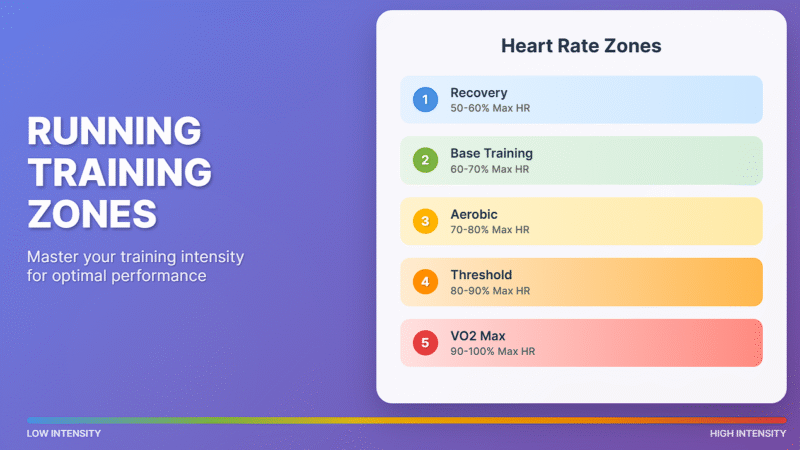Must Know Running Tips for Beginners

I started running in 2025, and since then, I’ve completed one half marathon, a 10K, and joined multiple running clubs and community runs. Trust me—it wasn’t easy at the start. From gasping during my first 5k to finishing my first 21K, the journey has been transformative. If you’re thinking about lacing up your shoes and giving running a shot, here’s my Beginner’s Guide for Running—packed with real-life, practical running tips for beginners.
1. Start Small and Build Slowly
One of the most common mistakes first-time runners make is going too fast or too far too soon. If you’re wondering how to start running as a beginner, the answer is simple: start slow. Begin with walk-jog intervals—try running for 1–2 minutes followed by walking for 2–3 minutes, repeated for 15–20 minutes total. Increase your running time gradually each week. Your body will thank you.
2. Invest in Good Running Shoes
Before you even hit the road or trail, make sure you’re equipped with the right pair of running shoes. One of the most common causes of beginner injuries is wearing old, worn-out, or ill-fitting footwear. Instead of picking shoes based on looks or brand alone, visit a reputable running store where you can get a proper gait analysis and expert fitting. Running shoes that match your foot shape, arch type, and running style can drastically improve your comfort, performance, and help prevent common issues like shin splints, knee pain, or blisters.
The right shoes provide the support and cushioning your body needs as it adjusts to the impact of running. Think of them as your most important piece of gear—they’re not just an accessory, they’re an investment in your running journey and long-term health.
3. Run at a Conversational Pace
Here’s a golden piece of running advice for beginners: you should be able to hold a conversation while running. This is known as running at a “conversational pace,” and it’s one of the best ways to ensure you’re training in your aerobic zone, where real endurance is built. If you find yourself gasping for air or unable to speak in full sentences after just a few minutes, that’s a sign you’re going too fast.
Slowing down isn’t a weakness—it’s a smart strategy. Running at a comfortable pace helps you build stamina, avoid early burnout, and stay injury-free. Over time, as your fitness improves, you’ll naturally be able to run farther and faster while still feeling in control. Remember, consistency is more important than speed in the beginning.
4. Use a Run-Walk Strategy
If you’re looking for an effective way to jog for beginners, the run-walk method is a smart choice. Instead of running nonstop, alternate between short running and walking intervals—such as running for 1–2 minutes and walking for 2–3. This approach reduces fatigue, lowers injury risk, and helps you gradually build endurance without feeling overwhelmed. Even seasoned runners use this technique during long races to conserve energy and stay consistent. It’s a simple, beginner-friendly way to make running more manageable and enjoyable.
5. Track Your Progress
To stay connected and track your progress, consider using popular running apps like Strava, Nike Run Club, Garmin Connect, or MapMyRun. These platforms allow you to log runs, follow training plans, analyze your performance, and connect with a wider community of runners. If you’re looking for a more structured training guide, the Runna app is an excellent choice. It offers personalized plans for all levels—whether you’re training for a 5K, 10K, half marathon, or beyond—with coaching support and tailored workouts to help you progress safely and effectively.

Quick-start Checklist for Beginners
| Week | Activity Focus |
|---|---|
| 1 | 5–10 min easy runs ×3; use run/walk intervals |
| 2 | Add +2 min to each run; keep conversational pace |
| 3 | Try a local Parkrun or join a friend/club |
| 4 | Start tracking your runs; note progress week to week |
6. Join a Community or Running Club
Running solo has its benefits—it’s meditative, flexible, and a great way to clear your mind. But joining a local running group, club, or attending a weekly Parkrun can add an entirely new and powerful dimension to your journey. Surrounding yourself with like-minded people helps you stay motivated, accountable, and inspired. You’ll learn from others, find encouragement on tough days, and maybe even meet a running buddy who shares your pace and goals.
7. Focus on Running Form, Not Speed
In the early stages of your running journey, it’s easy to get caught up in pace and numbers—but speed can wait. What truly matters at this point is developing proper running form. Focus on maintaining an upright posture with a slight forward lean, keeping your arms relaxed and swinging naturally at your sides. Try to land softly with each step, ideally mid-foot, to reduce impact on your joints. Good form not only makes running feel more comfortable and efficient but also significantly lowers your risk of injury. By prioritizing technique over speed, you build a strong foundation that will serve you well as your endurance and pace naturally improve over time. Remember, running well is better than running fast—especially in the beginning.
8. Listen to Your Body
No running guide for beginners would be complete without this crucial advice: pain is not gain. It’s perfectly normal to feel a little sore or tired after a run—especially when you’re just starting out—but there’s a big difference between healthy fatigue and warning signs of injury. Sharp pains, persistent aches, or prolonged exhaustion are signals that something’s not right. Instead of pushing through, give your body the rest it needs. Hydrate, stretch, and reassess your training plan. Skipping a run doesn’t mean you’re falling behind—it means you’re training smart. Rest is a key part of progress, not a sign of weakness. Learning to listen to your body early on will help you build a sustainable, injury-free running habit that lasts.
View this post on Instagram
9. Prioritize Recovery After Your Runs
Recovery is just as important as the run itself. Always stretch after your runs to reduce muscle stiffness and support flexibility. Hydrate well to replenish fluids lost through sweat, and fuel your body with balanced, nutritious meals to aid muscle repair and energy restoration. Quality sleep is your most powerful recovery tool—it’s when your body rebuilds and gets stronger. To stay injury-free and improve overall performance, consider incorporating strength training or yoga once or twice a week. These activities help correct imbalances, build core stability, and support your running muscles, making you a more resilient and efficient runner.
10. Put your running clothes out the night before
One simple trick to stay consistent with your runs is to lay out your running clothes the night before. It eliminates decision fatigue in the morning and serves as a visual reminder of your commitment. When your gear is ready to go, you’re more likely to follow through—even when you’re tempted to hit snooze. This small habit builds momentum and makes sticking to your running routine easier, especially on those early or low-motivation days.
There’s no one-size-fits-all when it comes to running. Some days will feel amazing; others might be tough. But if you stay consistent, listen to your body, and trust the process, you’ll surprise yourself. Whether your goal is to run a 5K, lose weight, or just feel better—these tips for first-time runners will help you build a strong, sustainable habit.
So if you’re looking for running tips for beginners, I hope this guide gave you the inspiration and tools to take that first step.



Insightful and Motivating!! Such a valuable read thanks for sharing!!